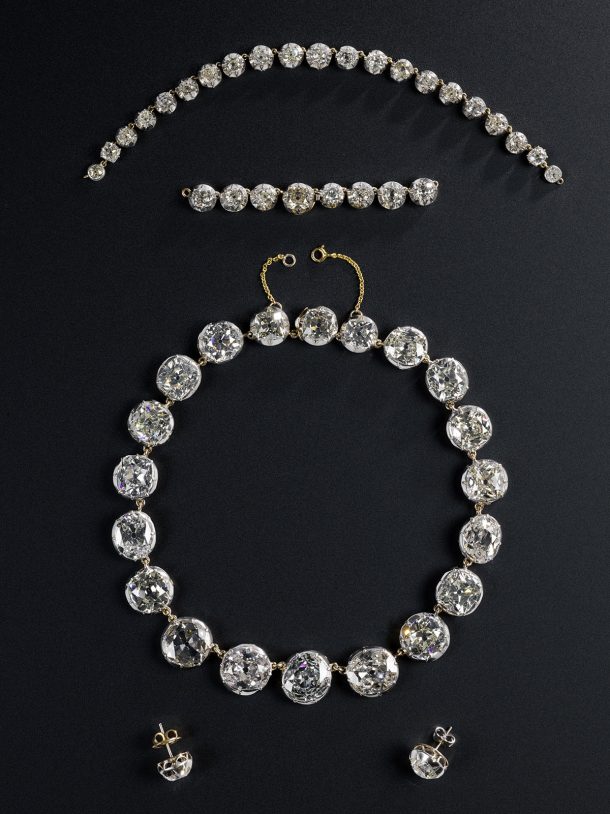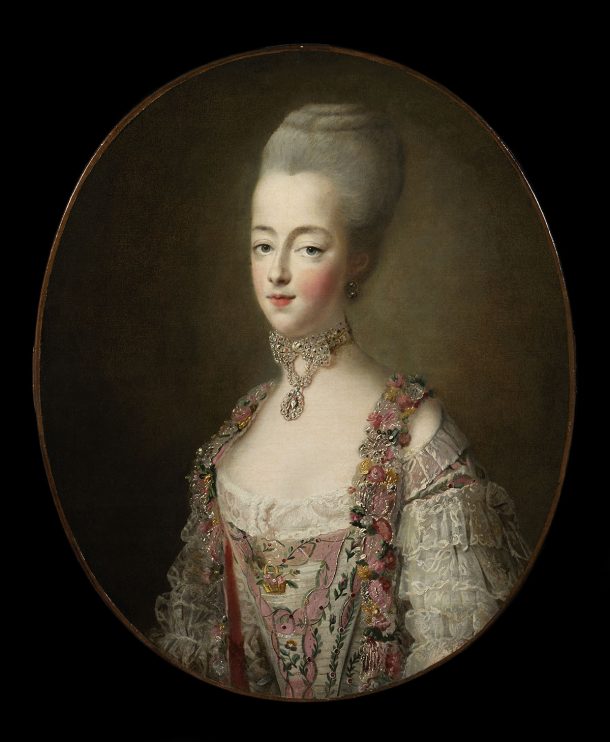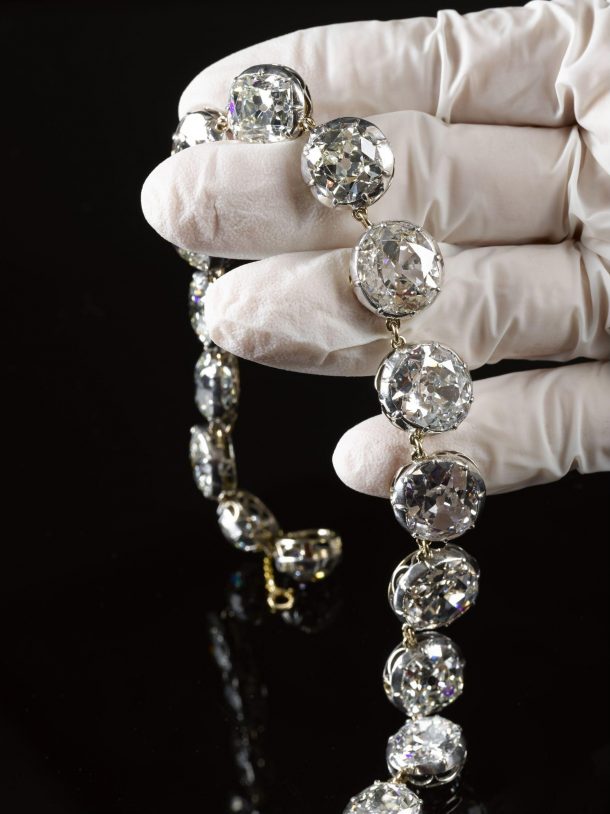The spectacular Sutherland Diamonds are now on public display at V&A South Kensington. Accepted in lieu of Inheritance Tax by HM Government and allocated to the V&A in 2022, these objects – comprised of a necklace with two extension lengths and a pair of stud earrings – can be seen in the William and Judith Bollinger Gallery, on Level 2 of the museum.

Royal and noble Jewels
Tradition links the diamonds to the infamous necklace once offered to Marie Antoinette by her husband Louis XVI of France in 1778.

After turning down the gift of the necklace, the French Queen found herself unwittingly caught up in an elaborate scam. A woman calling herself the Comtesse de la Motte (who was in fact a con artist pretending to be a confidante of the Queen), befriended Cardinal Rohan, who had fallen out of favour with the Queen, persuading him that he might make amends by helping to acquire the necklace. Following La Motte’s advice, the Cardinal found himself implicated in a complex scam which saw the ‘Comtesse’ making off with the necklace and selling the diamonds.
La Motte was caught and tried for fraud, along with Cardinal Rohan. Despite having no involvement in the ‘Affair of the Diamond Necklace’, Marie Antoinette’s reputation never truly recovered from the scandal: if these gems were indeed part of the necklace, then they played a crucial role in her downfall.
While the link to the ‘Affair of the Diamond Necklace’ has never been proven conclusively, the Sutherland diamonds have nonetheless played a remarkable and continuous role in royal and aristocratic life. They were worn by Harriet Elizabeth Georgiana Leveson-Gower (nee Howard) – wife of the 2nd Duke of Sutherland, granddaughter of the famous Georgiana, Duchess of Devonshire, and later Mistress of the Robes to Queen Victoria – to the Queen’s Coronation in 1838.
Harriet wore the diamonds as a headband rather than a collar, and the jewels still show the screw fittings used for this particular adaptation. The diamonds were worn again, this time as a choker with the extension lengths attached down the front, by Millicent (1867 – 1955), wife of the 4th Duke of Sutherland to the Coronation of Edward VII and Alexandra in 1902. The diamonds were then worn in 1937, to the Coronation of George VI and Elizabeth by Eileen (1891 – 1943), wife of the 5th Duke of Sutherland. On this occasion, the extension chains were used to lengthen the diamonds into a long ‘sautoir’, very a la mode for the time.
Exquisite Gems
These wonderful jewels are of the highest quality: several of the diamonds test as the purest diamonds, Type IIAs. With their early cutting styles, it is likely that many of the larger gems originated from the famous mines of Golconda, India, which produced the finest diamonds of the 17th and 18th centuries.

The sheer size and beauty of these gems must be seen to be believed.
The necklace is composed of 20 large old brilliant-cut diamonds in silver topped gold collets, and the two largest diamonds weigh approximately 15 carats. The simple style of a single line of diamonds is known as a ‘rivière’. The two extension lengths are composed of 21 diamond-set collets (four of which are in platinum), and the second is made up of eight diamond collets.

It is remarkable that this set of diamonds has survived; instead of being broken up and recut, the Sutherland diamonds have remained intact. The necklace in its present form, the rivière, is an exceptional jewel, with fascinating historical associations. These wonderful objects now await you at the V&A. If you love history, beauty, and diamonds, why not come and pay them a visit!



I think some mention should be made to the family who owned them and the fact that the V and A received them due to inheritance tax and death duties the family had to pay. Acknowledgement of previous ownership is important, the family have had to part with this in order to keep their estate intact! It is part of the history of the jewels themselves.